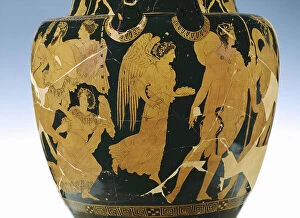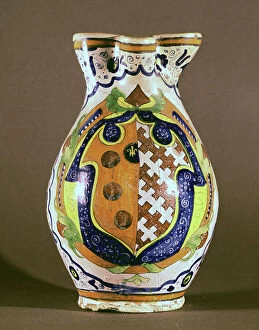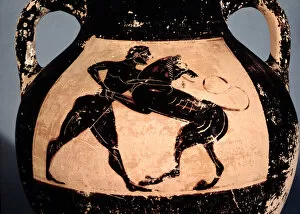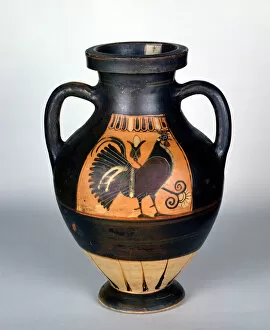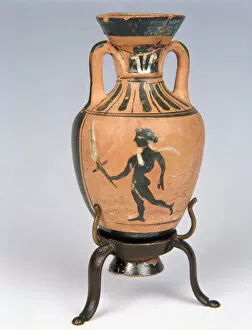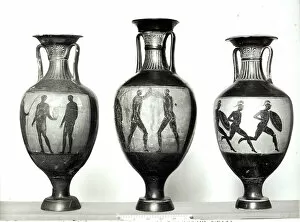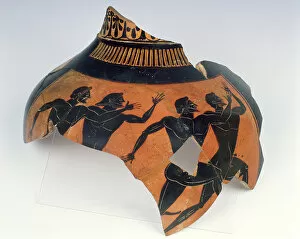Amphore Collection
"Exploring the Rich History and Artistry of Amphorae" Amphorae, ancient vessels crafted from ceramic, offer a captivating glimpse into the past
For sale as Licensed Images
Choose your image, Select your licence and Download the media
"Exploring the Rich History and Artistry of Amphorae" Amphorae, ancient vessels crafted from ceramic, offer a captivating glimpse into the past. From intricate depictions of athletes receiving trophies on Panathenaic amphorae dating back to 580-520 BC, to Herakles' epic struggle with the Nemean lion portrayed in exquisite detail on Attic black-figure amphora - these artifacts transport us to a bygone era. The versatility of amphorae is evident in their varied designs. Corinthian Style pottery showcases an amphora adorned with a proud cockerel, while the Bulas Group's Small Panathenaic Amphora from Athens exhibits its own unique charm. The significance of athletic achievements is further highlighted through Three Panathenaic amphorae depicting victorious athletes and boxers. Panathenaic black figure and red-figure amphorae provide glimpses into different aspects of ancient life. A boxing contest takes center stage on a black-figure Panathenaic piece from around 336 BC, showcasing both skill and strength. Meanwhile, an Attic red-figure masterpiece depicts Euphorbos alongside infant Oedipus in a tale that has captivated audiences for centuries. Not limited to human subjects alone, these vessels also pay homage to mythical beings such as Athena - goddess of wisdom - depicted majestically on an Attic black-figure amphora from the 5th century BC. Additionally, nymphs grace some pieces; one can almost hear the gentle murmurs emanating from fragments like those found on a Panathenaic Amphora or envisioning nymphs frolicking near innocent fountains. Through their artistry and historical significance, these remarkable examples remind us that beyond being mere containers for goods or liquids, each amphora holds within it stories waiting to be discovered – tales that connect us with our ancestors and allow us to appreciate their creativity and cultural heritage.

